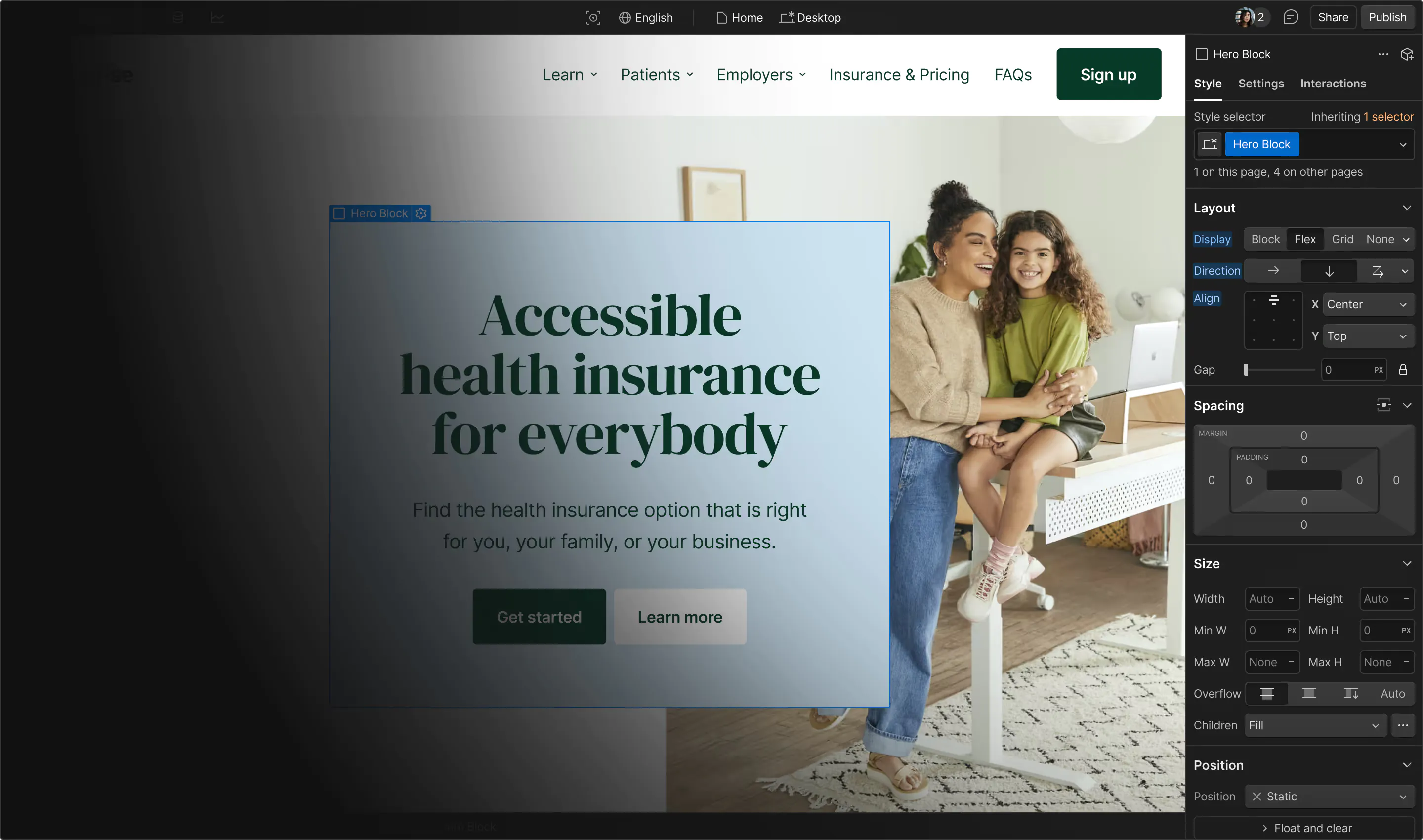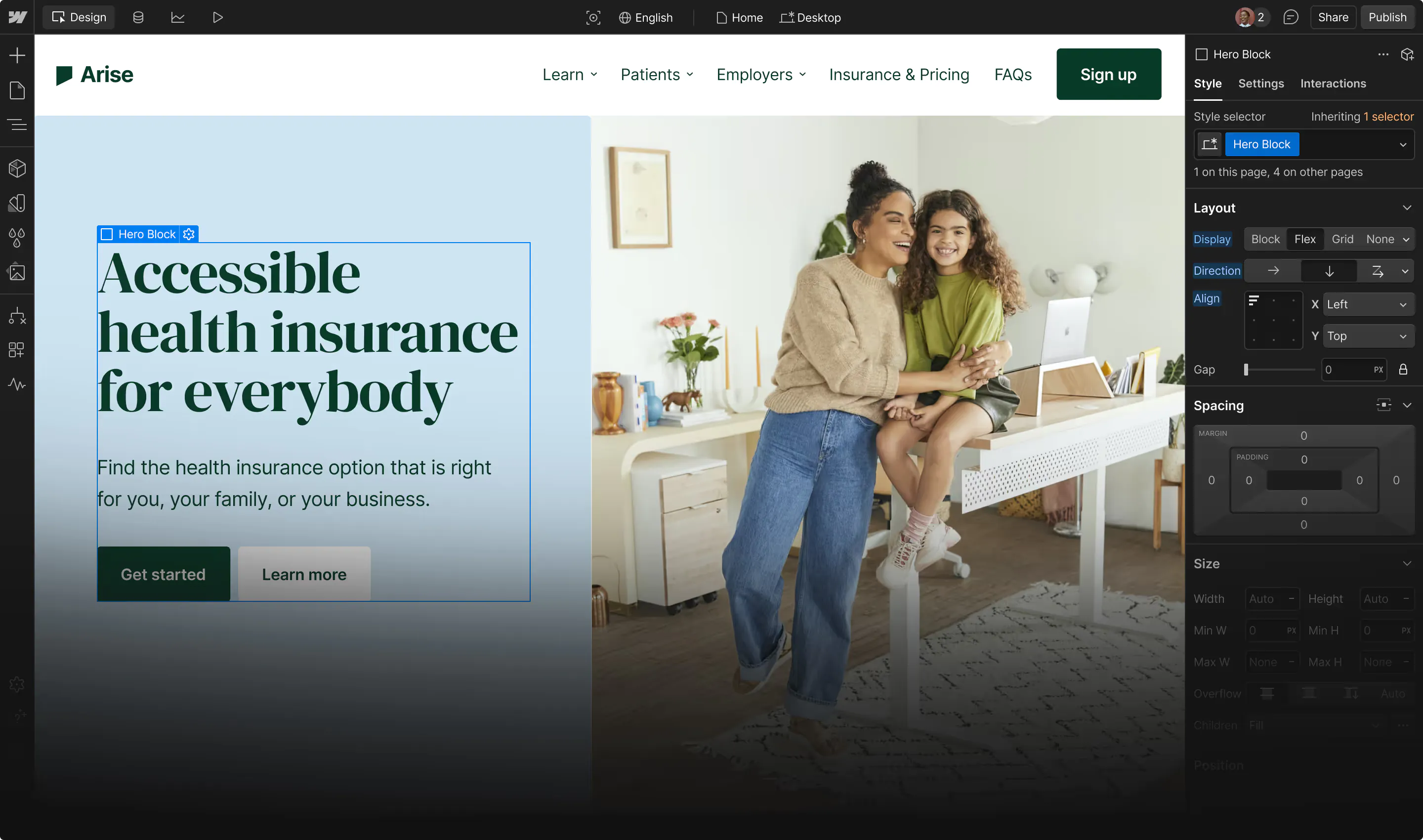Here’s what you need to think about before you quit your day job and start your own web design business.
Shifting to a full-time web design business can be rewarding, especially if your passion lies with your freelance work. Starting your own web design business is exciting, but it's important to think about all the factors that could affect this long-term commitment.
Are you sure of your future clients and their demands? How certain are you about their payment credibility? How will you move forward, pay your employees, bear infrastructure costs, and run the daily operations of your web design company?
How to start a web design business in 9 steps
Before you leave your current role and start your own web design business, you'll need to consider these questions. Here's a nine-step process to get you started.
Step 1: Plan and define your niche
Start by asking yourself these critical business questions to create a solid foundation for your web design company:
- Decide on your niche or main focus.
- Determine if you'll start solo or hire staff or freelancers.
- Plan how many web designers you'll recruit.
- Decide whether you'll hire administrative staff or have designers and developers multitask initially.
- Determine the office location and how much space you'll need.
- Set a budget for essential equipment like computers, furniture, and software.
- Outline an initial budget for advertising, marketing, and branding to attract clients.
You'll need to dedicate a lot of time and resources to get your web design business up and running, so map out clear schedules, budgets, and plans. Be sure to check out the latest web design trends so you can get a feel for what your future clients might request.
If you have a mentor, reach out to them. Talking with someone who has experience starting their own business is a great way to gain valuable insights into the entrepreneurial journey.
Step 2: Determine your services and specialties
- Focus on ecommerce if that's your specialty.
- Consider setting up learning portalsif you have expertise in that area.
- Decide if you'll include regular blogging or only static page designs.
- Determine whether you'll host clients' websites.
- Offer SEO (search engine optimization) services if you have the skills.
- Provide ongoing website maintenance for recurring revenue.
You don't have to be everything for everyone. Instead, focus on the skills and services you excel at.
Consider offering services that bring in automatic recurring revenue, such as website maintenance and hosting. These services aren't as hands-on as creating a new website, but they pay off well. For instance, hardware manufacturers make recurring income by offering annual maintenance contracts. Most annual maintenance contracts are billed with no work done as the hardware components are good to run for years.
Step 3: Set up your portfolio
Once you know what aspects of web design you'd like to focus on, build your web design portfolio around them. Your website will be the face of your company, so make sure it shows off your skills and includes your services, prices, and contact information.
If you have happy customers from your freelance days, reach out to them and ask for testimonials that you can add to your site. Those recommendations are crucial for a new business. Also consider collecting short case studies that describe the client's problem, your solution, and measurable outcomes. This approach shows prospective clients the tangible impact of your work.
Get in touch with your previous clients and ask their permission to showcase their projects on your website. If you are unable to share business names due to confidentiality, consider anonymizing the designs or requiring a password to view them.
Step 4: Establish your business operations
Next up is staffing. When you first launch your business, you might be working solo. But if and when you have the budget, you'll want to reach out to your network and bring trusted designers and developers to your team. As you grow, you might consider adding administrative and marketing professionals to your team, too.
Stay aware of your schedule
Balancing numerous tasks can lead to burnout if you don't plan properly. Set realistic working hours, prioritize tasks, and remember to step away from work to recharge.
You may also consider outsourcing tasks like taxes, so you can focus on what you love. And if you have employees, you'll need to hire a person or service to handle things like benefits and time off for them.
Equipment
You and your team will need computers with large high-definition screens and additional monitors (minimum 21 inches) for design work. Verify your camera specifications as well — you'll need good quality cameras and microphones to communicate with your clients. Consider getting dedicated business internet services so you'll have fast, reliable connectivity.
Next, build your tech stack with tools for:
- Website mockups and prototypes
- Graphic design
- Web development
- Document management
- Use cloud-based collaboration tools (like Google Workspace or Figma) for design reviews, file sharing, and version control so your team can stay consistent and efficient.
- Project management
Workflow
Set up a system to track your ongoing projects. Try to automate most of your day-to-day tasks.
- Use autoresponders to reply to client inquiries and let them know you're available. You can also use them during vacations or absences.
- Use a time-tracking system that automatically creates invoices based on recorded hours.
- Try apps such as Todoist and Asana to manage tasks, assign work, and track deadlines.
As you gain more clients, be ready to accommodate your company's growth and provide resources and changes in infrastructure.
Step 5: Determine legal requirements
Once you've decided on a name for your business, it's time to make it official.
Determine whether your company will be a private limited, LLC, corporation, etc. according to your country and/or state regulations. For example, if you live in India, you need to get a GST number to pay sales tax on goods delivered to your clients. Plus, you need to register your online domain name as well.
Ensure that your budget accounts for business insurance so you can protect both your physical assets and business.
Business taxes can be complicated, so it's a good idea to contract a tax professional who can provide guidance and services. Work with them to set up accounting software such as FreshBooks or QuickBooks so you can easily track business expenses and export the necessary information when tax time rolls around.
Make sure you set up a business bank account for your company revenue and expenses. And don't forget about accepting payments from your clients! Services such as PayPal or Stripe are great for processing digital payments.



















Get our 100 video course on web design — for free
From the fundamentals to advanced topics — learn how to build sites in Webflow and become the designer you always wanted to be.
Step 6: Establish deliverables and pricing
Establish a process for keeping your clients updated about deliverables. While your clients probably won't want a daily update, you should determine specific milestones when you'll check in with them. Working with your clients throughout the project keeps them engaged and gives them a chance to provide feedback earlier in the process.
Stick to schedules as diligently as possible and don't forget to account for revisions. Your contract should define what types of revisions are included in the project price (if any) and outline costs for additional changes. If you need to make adjustments, work with the client on a new delivery date so they know when to expect the revised project.
If you've been using freelance sites like Upwork or Freelancer, you probably have a good idea of what deliverables to offer, but be careful about setting your prices. When you have your own business, there's more overhead, so you'll probably need to raise your rates.
There are online calculators and price charts to reference when you're unsure about prices, such as a freelance rate calculator.
If your budget permits, you can compare your prices to your competitors' with tools like Luminate Market Price, PROSPros, Zilliant, and Pricefy.
Step 7: Create work contracts and agreements
A vital part of your business is a work contract. Contracts clearly establish expectations and requirements for both parties — you and your client.
The contract should include details related to deliverables, timelines, and prices and account for what-if scenarios. Aim for contracts that are simple and to the point. You don't want to intimidate clients with massive contracts full of unnecessary legal jargon.
Define the payment terms in the contract. Clearly state how and when you'll invoice for work and include instructions on how and when your clients should make payments. Don't forget to include stipulations for late payments.
Save yourself some time by working with a legal professional to create template contracts based on the different services and packages you offer. This way, you can simply fill in a few details for each new project. You can also use template services like LegalZoom or America’s SBDC.
Step 8: Market your services
Consider sharing case studies on LinkedIn or using paid ads to showcase your strengths. These strategies can help you reach potential customers beyond your existing freelance clients.
Share your website on your personal social media channels to start building brand awareness. You may even want to set up separate business accounts like a LinkedIn company page or Facebook business account.
If you're providing expertise in a particular niche, mention that. That way, you stand out from the crowd. Do you create unique sites for specific industries like gaming, B2B, or software as a service companies? Do you work in a particular industry, or have you worked for government agencies? Showcase some work samples — highlighting your specialties will draw relevant clients to you from among the many looking for web designers.
Don't ignore the importance of video marketing. Whether it's a YouTube channel or Vimeo, make your presence known with videos.
Email marketing is a good way to promote your business, too. Services such as Mailchimp make it easy to maintain an email list of clients and share promotions, new services, and company updates with them. You could even use a newsletter to share tips or promote an affiliate program that encourages existing customers to spread the word about your business.
You might also want to use customer relationship management software, which works as an autoresponder and an email marketing tool and tracks overall business development, customers, and growth.
Step 9: Continue your education
Remain competitive by keeping an eye on web design trends and setting aside time for improving your web design skills. Sign up for web design courses or watch free lessons online through platforms like Webflow University.
Watching your competition is another way of staying ahead of them. Keep track of your competitors' websites and growth, and it'll inspire and motivate you to do better.
How to find web design clients
Networking is a powerful way to find potential clients. Attend local meetups, conferences, or online events to build meaningful relationships and showcase your expertise.
Online platforms such as Upwork, LinkedIn, or specialized job boards can also connect you with potential leads. Optimize your profiles and highlight case studies to develop credibility and attract your ideal clients.
Common pitfalls and how to avoid them
- Scope creep: Set clear boundaries in your contract and maintain open communication.
- Underpricing: Research market rates and factor in overhead so your work remains profitable.
- Overcomplicating design: Prioritize user experience and clarity to keep projects on track.
- Poor time management: Create realistic schedules and milestones to stay organized.
Start your web design business with Webflow
Building a successful web design business requires careful planning, dedication, and the right tools. Webflow empowers aspiring design entrepreneurs with an intuitive platform that showcases your skills while streamlining your workflow. Create a stunning portfolio, deliver professional client projects, and scale your business all in one place.
Ready to transform your design passion into a thriving business? Get started with Webflow today and take the first step toward building your design empire.

Grow your freelance business
Take on more clients and build websites faster. Webflow empowers freelancers to design and deliver with confidence, while keeping full creative control.































